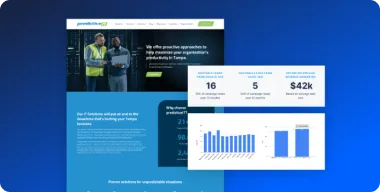The key to “joining up” online and offline marketing strategy is consistency. Customers are marketing savvy these days and are becoming more and more wary of what they see as manipulative techniques. If there is even a hint that a manufacturer isn’t being upfront about what it can do for its customers — highlighted by inconsistent messages or incongruent associations — they will back away fast.
Take an extreme example, like a manufacturer of hunting equipment. If they were to run a straightlaced ad campaign in outdoor magazines, nobody would bat an eye. But if at the same time they ran a sarcastic or satirical social media campaign that asked for likes and shares, readers would probably get spooked. The inconsistency is obvious.
Getting the most out of your marketing efforts is all about homogenizing your message — online and offline.
Hashtags and QR codes
In the social media age, getting people’s attention isn’t easy. Hashtags (or the pound sign, #, for those who grew up without Twitter) give you a simple way to inject your product into online conversations within your industry. For instance, if you have a stall at a trade show or are contributing to a seminar at an event, create a hashtag that links to it. When printed on brochures, banners, articles, and ads, hashtags decrease the effort required to join online conversations about your shop and its product.
Quick Response (QR) codes are similar to hashtags, but their objectives differ. Hashtags are designed to link conversations and generate interest in a specific topic, whereas QR codes act as links that don’t need to be typed by hand. Snapping a quick picture of a QR code on printed materials can link to a landing page or promotion, like a limited-time discount or a bulk purchase offer.
QR codes are more likely to lead to direct conversions, while hashtags build brand awareness and authority. Both can be used with digital content marketing and traditional offline marketing to great effect.
Cross-device marketing
Your shop’s prospects use a variety of devices throughout their journey to become a customer. They often research on a mobile device before making the final purchase on a desktop computer or over the phone. According to Google, 85% of customers start a purchase on one device and finish on another, meaning it’s especially important to optimize conversions on both mobile and desktop.
Cross-device marketing also applies to more traditional offline channels like TV and radio. Off the top of your head, can you think of a local ad with a catchy jingle? Incorporating an easy-to-remember web address into print and broadcast ads ensures that when your prospects are ready to take the next step, they already know where to go.
Social media polls and surveys
With the advent of social media polls and surveys, market research has never been easier. But these polls and surveys don’t need to be limited to influencing your online presence, they can also provide reliable feedback on what direction to take offline campaigns and how to improve your prototypes, parts and procedures.
For instance, a company that manufactures consumer electronics such as fitness wearables may not be aware that their latest product lacks an important new feature that a competitor has developed. Conducting a social media survey will quickly highlight the problem, thereby allowing a software update to be swiftly written and released to rectify it.
When marketing on social media it is incredibly easy to segment and address certain groups and demographics directly. Social media is also great for getting insight into the habits and preferences of these groups. For example, if your B2B customers are interacting with your social media accounts on weekdays and B2C customers tend to interact with you on weekends, that should have a huge impact on everything from phone strategies to ad buy time.
Integrated content marketing
Integrated content marketing
We’re the first to harp on the importance of digital content marketing, but don’t forget that trade magazines and brochures are still popular forms of communication in the industrial sector. Even today, a feature article in a magazine is going to reach hundreds or thousands of prospects each issue. With some creativity and ingenuity it’s rare that you will be forced to choose between online and offline marketing.
Forward thinking manufacturers are finding ways to cleverly integrate their online and offline content marketing efforts. Take construction machinery manufacturers Caterpillar, for example. Their 2014 Built for it campaign included a YouTube video of two excavators playing giant Jenga that became a viral hit, racking up over 4 million views and counting. Rolling that kind of momentum into a successful print campaign was a cinch.
In an industry that still relies so heavily on relationships and handshake deals, integration is the way forward for manufacturing companies. Offline marketing still has its place, especially in the form of trade shows and print publications that cater to specialist niches. But digital marketing reigns supreme as the most powerful way to reach a given market and get back useful data.
Our advice is to balance the two to suit the industry you work in and the market you cater to. If your market is more old-school, it makes sense to invest equally in offline and online. If your market is more technologically minded, then focus more on online channels.
Think it’s crazy for a digital marketing company to be advocating for offline campaigns? First of all, we don’t succeed if our customers don’t succeed, regardless of where they’re advertising. Second of all, we do offer a custom brochure design service! Whatever you need to market your manufacturing business — Pronto can help. Just give us a call today.






